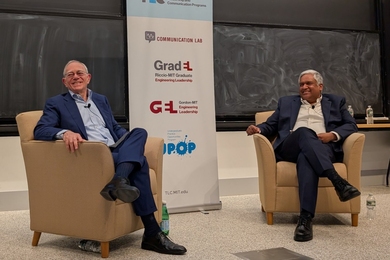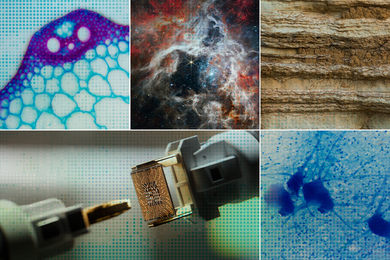A computer design tool originally created for animation may soon unlock the secrets of the structure of ancient cathedrals, according to MIT Assistant Professor John Ochsendorf of architecture.
A structural engineer specializing in architectural and construction history, Ochsendorf recently presented to colleagues a virtual design method that has been extended in novel ways by a team of architects, computer scientists and engineers at MIT.
"This is the kind of work -- crossing the boundaries of engineering, history and architecture -- that could only happen at MIT," Ochsendorf said.
The method, known as particle-spring systems, is a three-dimensional design tool that was originally developed by computer scientists for creating graphics such as character animation and cloth simulation. For example, particle-spring systems produced the clothes "worn" by virtual characters such as Yoda in "Star Wars Episode III: Revenge of the Sith."
The interdisciplinary MIT team proposes to employ particle-spring systems dynamically: They are using the software, which models the gravitational load on a given shape's exterior, to find a structure's most efficient form and to allow the architect or engineer to interact with the form-finding program while it is still running.
Ochsendorf, assistant professor in the Building Technology Program, described the software to colleagues at the annual meeting of the American Association for the Advancement of Science (AAAS). The meeting, held Feb. 16-20 in St. Louis, was attended by more than 6,000 people. Ochsendorf's talk was titled "Arches: Gateways From Science to Culture."
The team's software is the "next generation of design tools. My dream is to use it to understand Gothic cathedrals," he said.
Historically, finding and creating new structural forms was accomplished by painstaking physical means. Antoni Gaudi, Spanish architect and designer of the chapel of Barcelona's Colonia Guell, devoted 10 years to a "hanging chain" model made of weights on strings that would serve as an upside down version of the efficient arched forms he sought.
Gaudi's work followed the 17th century discovery by English scientist Robert Hooke that, "As hangs the flexible chain, so but inverted will stand the rigid arch."
MIT's virtual method, Ochsendorf said, is as straightforward as Gaudi's physical method for exploring and testing new forms, but it uses time, materials and money more efficiently.
"Using the particle-spring approach, a three-dimensional structure such as a cathedral can be created in only a few minutes. Most importantly, the user can change form and forces in real time while the solution is still emerging," Ochsendorf and Axel Kilian (Ph.D. 2006) wrote in a recent paper, "Particle-Spring Systems for Structural Form-Finding."
Ochsendorf said he envisions MIT's particle-spring systems method being used to analyze and illuminate historic masonry methods (these secrets were closely guarded by guilds) and to support sustainable modern building practices by discovering more efficient -- and less-resource-consuming -- structures.
MIT's own Kresge Auditorium, designed by Eero Saarinen and built in 1955, offers an example. The hanging chain software program could have reduced the amount of concrete used in its roof.
"The Kresge roof is one-eighth of a sphere. The shell is made of 6 inches of concrete, and it could have been made using only 3 inches of concrete," Ochsendorf said.
A version of this article appeared in MIT Tech Talk on March 8, 2006 (download PDF).







